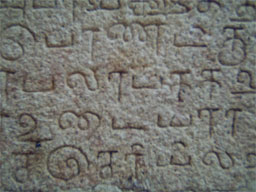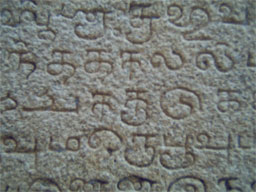Dear Jack,
It has been a while since I promised to write to you about what I found out in Sri Lanka.
 |  |
I have eventually been there in October last year - traveling with my wife and a friend. I tried to find out a little bit more about the two tea estates - Hatherleigh and Oakhampton, which your great grandfather had once managed. I found only one remaining: Hatherleigh.
 |  |
I had contacted Finlay's beforehand, who are now managing the estate. The district manager, Mr. Dhayan, connected me with the estate manager, Mr. Upendra, who was very generous and took a whole day off to show us around and explain as much as he himself knew about the history. Hatherleigh estate is in a not so frequently visited area but lies in an enchanting setting. There is a long waterfall coming down in the middle of the estate. Most of the land is mixed culture - quite special. So, tea bushes are not growing in a near mono-culture as in the highlands but are mixed with small orchards and even jungle. The estate directly borders Sinaraja Rainforest, which is a National Park today - but also not so frequently visited due to its enormous population of leeches. We found some of them while walking on the estate, or rather they spotted us.
 |  |
 | 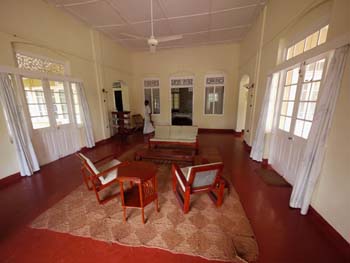 |
As expected, there are not too many really old buildings left on the estate. The manager bungalow is probably from the late 19th century and so are some of the other buildings except the factory, which has burnt down in the 1960ies and was rebuilt on a different site. Some of them could have been there in this or another form at James' times. From a 1912 map it seems that the locations of the main buildings have not changed though - being the manager bungalow, the nearby office building, another management bungalow and the charming guest bungalow with its direct view on the majestic waterfall.
 | 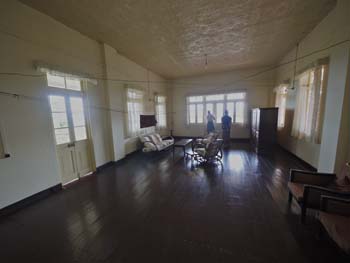 |
 |  |
The estate's boundaries are still the same as when Churchward had been there. The manager told us that this is the case with many estates in Sri Lanka. Even the names remained largely unaltered.
I was not able to find out more about the second estate, which I presume was not far away and maybe neighboring. I only asked a handful of people though and since I could not take too much time due to my friend's need for 'real holiday', we didn't make it to Ratnapura where they have a local museum. The latter should be a good option for the next time, as well as the new planters' club there. An old planters' club was in Rakwana but is now defunct. There is a photo of it though.
 |  |
 | 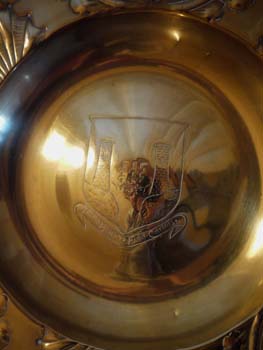 |
| The inscription on bowl reads: "Statio bene fida carinis" translated as 'A safe place (harbor) for trustworthy ships' and is the motto of the city of Cork. | |
Then there is the tea-museum in Kandy which might hold some additional info too.
Rakwana is a very small town in almost walking distance. Hatherleigh is de facto Rakwana and Rakwana is there because of the estate.
Regarding the other estate, Oakhampton: The manager of Hatherleigh told me that today's area where tea is actually planted is much smaller than it was in the 19th century. Apparently they had cut down not on the size of the estate, but on the size of planted areas. As always he complained about the economical situation of the tea industry and that they are not easily able to find workers anymore without giving them additional incentives, etc. I somehow believed him - since obviously the tea exchange in Colombo makes big cuts and the producers are left a bit between them and the labor market. Though Ceylon today is the world's biggest tea producer, it seems to be not highly profitable for the estates themselves. We even 'accidentally' participated in an opening ceremony for a small worker's rest house.
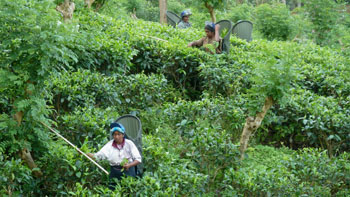 |  |
 | 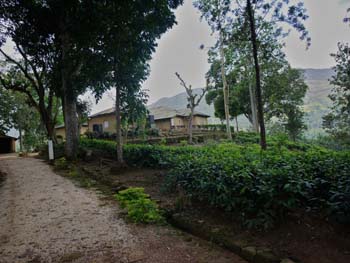 |
Just some additional figures: The estate employs around 300 workers all together plus 60 at the factory. They are producing 16 sorts of (black) tea with different rollings, tips and whole leaves, like Orange Pekoe, etc. Of course we drank some and I found it very good. It's rare to get tea that is not blended and really comes from one place only.
On top of guiding us around Mr. Upendra, the estate manager, gave us each a package of F.B.O.P tea and if you or anybody in your family drinks black tea, I would really like to send you one of these packages. Just let me know!
I know agree that the "temple" with the Nacaal tablets has to be in South India and not Ceylon (which back then was counted under "India"). There seems to be no major temple anywhere near Rakwana, almost certainly not a very old one. Though I suspected that earlier, I find it always rewarding to start looking from the fringes towards the center.
However, Hatherleigh Estate lies in an area that is considered as the heartland of the Veddhas, the most ancient tribes that are left over from Lanka's original population. They are somehow similar to Indonesian or Australian Aborigines. Also I found that the area around Hatherleigh was one of the certainly more 'mystical' places from the sites we have seen during our 2-week traveling. Deep gorges, dense jungle and steep hills mingling with fog.
 |  |





